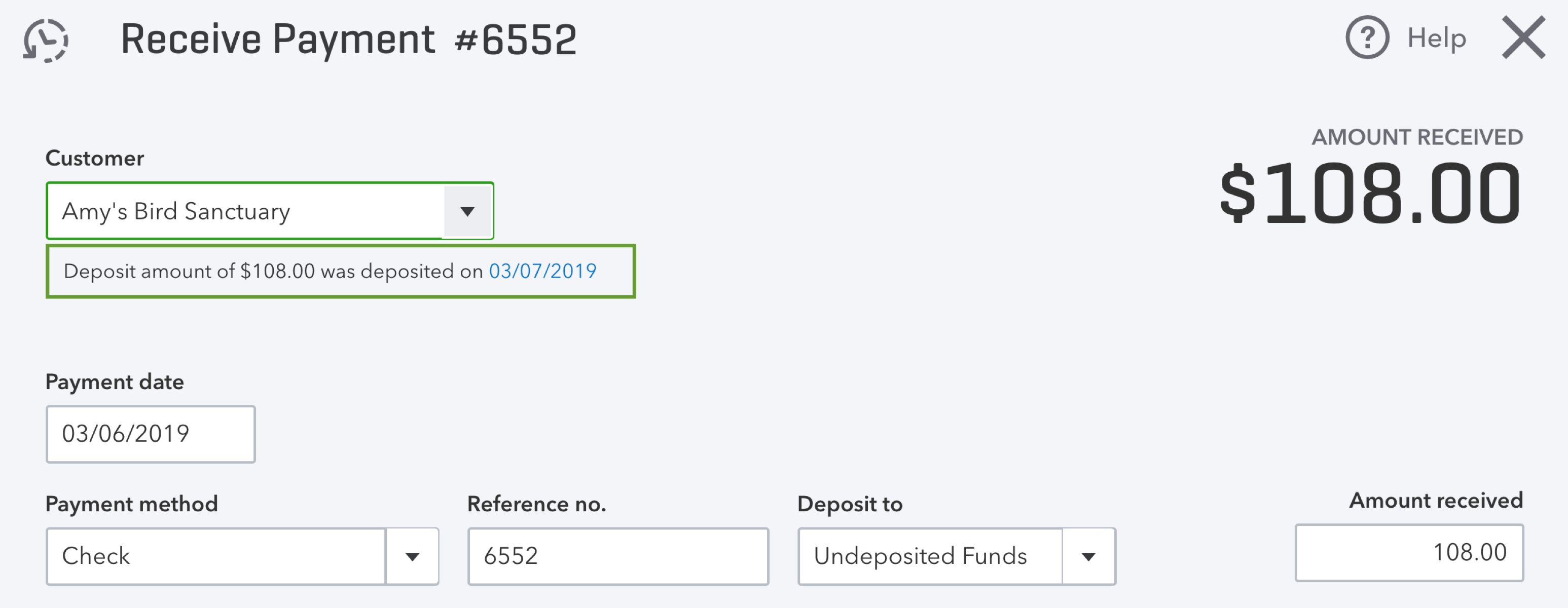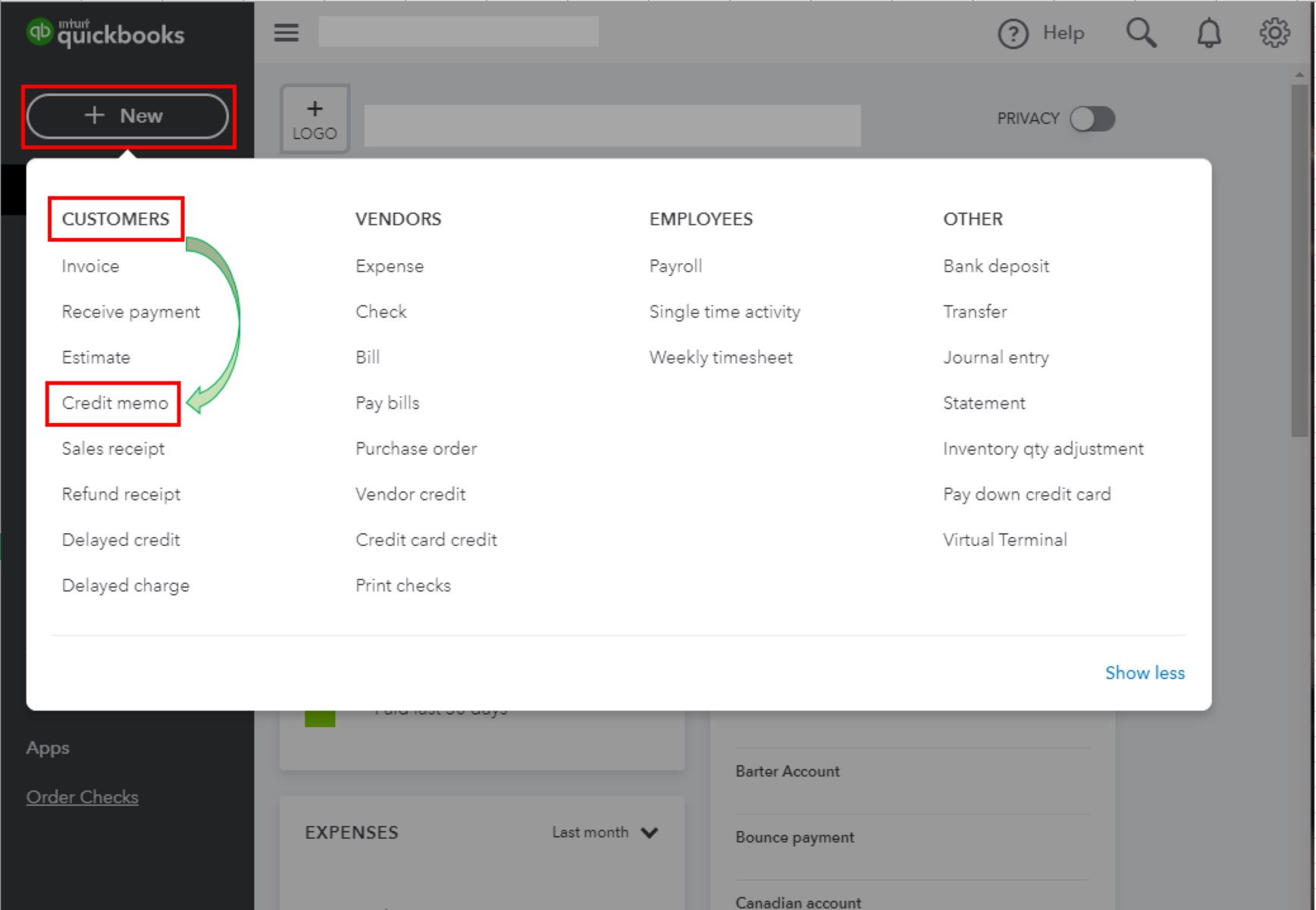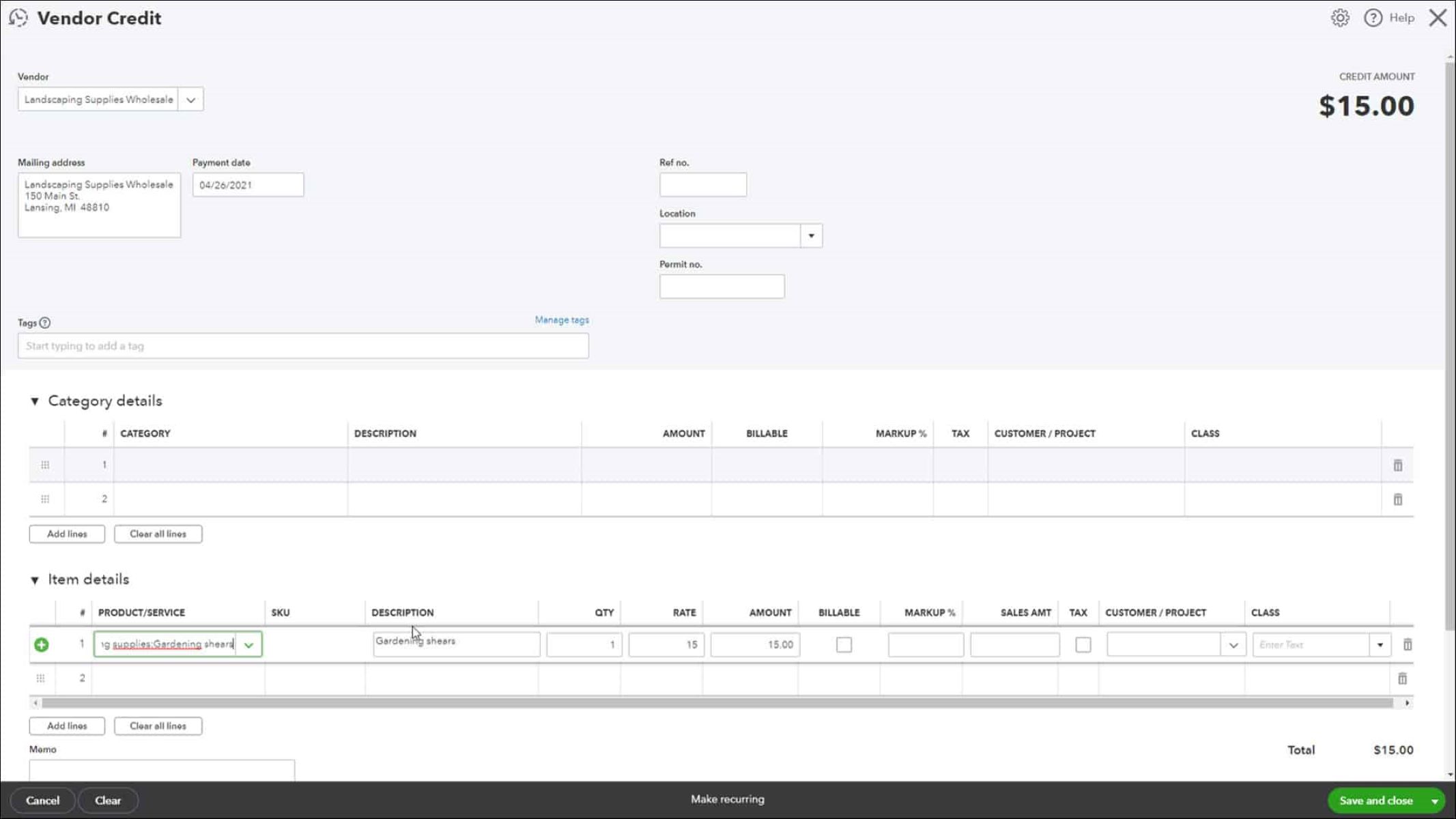Introduction
In the world of finance and accounting, QuickBooks is a widely used software that helps businesses manage their finances efficiently. One of the features that QuickBooks offers is the ability to apply credits to transactions. Credits can be issued to customers as a form of payment or as a way to offset an outstanding balance. However, there may be instances where you need to unapply a credit in QuickBooks.
Unapplying a credit means reversing the application of the credit from a specific transaction, effectively removing its impact on the account balance. This can be necessary if a credit was mistakenly applied to the wrong transaction or if there are changes to the account’s financial situation that warrant unapplying the credit.
In this article, we will guide you through the steps to unapply a credit in QuickBooks. Whether you’re a business owner or an accounting professional, understanding how to unapply credits can help you maintain accurate financial records and ensure that your account balances align with your business transactions.
It’s important to note that unapplying a credit in QuickBooks should be done with caution. Make sure to double-check the transactions and consult with a financial advisor or accountant if you have any doubts about unapplying a credit.
Understanding Credits in QuickBooks
Before we dive into the steps to unapply a credit in QuickBooks, let’s take a moment to understand what credits are in the context of this software.
In QuickBooks, credits are essentially a form of payment that can be applied to transactions to reduce the outstanding balance. This can be useful when a customer has an account credit, which can be applied as a partial or full payment towards an invoice or sales receipt. Alternatively, credits can also be issued as refunds or adjustments for returned or damaged goods.
When a credit is applied to a transaction, QuickBooks automatically adjusts the account balances accordingly. This ensures that the customer’s outstanding balance is reduced by the credit amount, providing a clear and accurate view of the financial status.
Credits in QuickBooks can be applied in two ways:
- Credit Memo: A credit memo functions as a negative invoice. It is created to reflect a reduction in the amount owed by a customer due to a credit or refund.
- Payment: A payment can also be applied as a credit to an invoice or sales receipt. In this case, the payment would need to be associated with the credit memo or an open credit in the customer’s account.
It’s important to note that credits in QuickBooks are typically used to offset outstanding balances, rather than being considered as actual income. For record-keeping purposes, it’s essential to maintain proper documentation and accurately apply credits to the appropriate transactions.
Now that we have a clear understanding of credits in QuickBooks, let’s move on to the steps involved in unapplying a credit.
Steps to Unapply a Credit in QuickBooks
If you find yourself in a situation where you need to unapply a credit in QuickBooks, follow these steps to ensure a smooth and accurate process:
- Step 1: Accessing Your Credit Memo List
- Step 2: Locating the Credit to Unapply
- Step 3: Opening the Credit Memo
- Step 4: Unapplying the Credit
- Step 5: Saving the Changes
The first step is to access the Credit Memo list in QuickBooks. To do this, open your QuickBooks software and navigate to the “Customers” tab located at the top of the screen. From the drop-down menu, select “Credit Memos/Refunds.” This will display a list of all the credit memos and refunds associated with your customers.
In the Credit Memo list, locate the specific credit that you want to unapply. You can use the search bar or scroll through the list to find it. Once you’ve located the credit, click on it to open the Credit Memo details.
Once you have opened the Credit Memo details, review the information to confirm that it is the correct credit you wish to unapply. Pay attention to the customer name, credit amount, and any associated transaction details.
To unapply the credit, locate the transaction that the credit was originally applied to. This might be an invoice, sales receipt, or any other relevant transaction. You can find the associated transaction details within the Credit Memo. Click on the link provided to access the transaction.
Once you are in the associated transaction, locate the line item that reflects the credit applied. Select the item and remove the amount applied. This will effectively unapply the credit from the transaction.
After unapplying the credit, make sure to save the changes you made to the transaction. In the transaction screen, locate the “Save” or “Save & Close” button to confirm the changes made.
Following these steps will successfully unapply the credit from the respective transaction, ensuring that the account balance reflects the unapplied credit accurately.
Remember, it is crucial to thoroughly review the credit and the associated transaction before unapplying it. A careful review will help avoid any errors or discrepancies in your financial records.
Step 1: Accessing Your Credit Memo List
The first step in unapplying a credit in QuickBooks is to access your Credit Memo list. This list contains all the credit memos and refunds associated with your customers. By accessing this list, you will be able to locate the specific credit you want to unapply.
To begin, open your QuickBooks software and navigate to the “Customers” tab located at the top of the screen. From the drop-down menu that appears, select “Credit Memos/Refunds.”
Once you have selected “Credit Memos/Refunds,” a list of all the credit memos and refunds in your QuickBooks account will be displayed. This list will include details such as the customer name, credit amount, and associated transactions for each credit memo.
To locate the credit you want to unapply, you can use the search bar provided at the top of the Credit Memo list. Enter relevant information such as the customer’s name or the credit memo number to narrow down the search results.
If you prefer to manually search through the list, scroll down to view all the credit memos and refunds. Take your time to review the details of each credit memo until you find the specific one you wish to unapply.
Once you have located the credit memo you want to unapply, click on it to open the Credit Memo details. This will allow you to review the information and ensure that you are working with the correct credit memo.
Accessing your Credit Memo list is the crucial first step in unapplying a credit in QuickBooks. It provides you with an overview of all the credit memos and refunds in your account, making it easier to locate the specific credit you want to unapply.
With the Credit Memo details open, you can proceed to the next step in the unapplying process, which involves locating the credit to unapply within the specific transaction. This will be covered in the next section.
Step 2: Locating the Credit to Unapply
After accessing your Credit Memo list in QuickBooks, the next step in unapplying a credit is to locate the specific credit that you want to unapply. By finding the credit within the list, you can proceed to open its details and review the information before unapplying it.
To locate the credit, you can utilize the search bar at the top of the Credit Memo list. This allows you to enter relevant information, such as the customer’s name or the credit memo number, and quickly narrow down the search results.
If you prefer to manually search through the list, scroll down to review all the credit memos and refunds. Take your time to examine the details of each credit memo until you find the specific one you wish to unapply.
Once you have located the credit memo you want to unapply, click on it to open the Credit Memo details. This will provide you with a comprehensive view of the credit, including essential information such as the customer name, credit amount, and any associated transactions.
It is crucial to carefully review the information presented in the Credit Memo details to ensure that you have identified the correct credit for unapplying. Pay close attention to the specific details mentioned earlier, as well as any additional information or notes associated with the credit.
By locating the credit to unapply and opening its details, you establish a solid foundation for the unapplying process. This step allows you to confirm that you are working with the correct credit memo and proceed with confidence to unapply the credit in the subsequent steps.
In the next section, we will discuss step 3, which involves opening the Credit Memo to review and verify the information before proceeding with unapplying the credit.
Step 3: Opening the Credit Memo
Once you have located the credit you want to unapply in QuickBooks, the next step is to open the Credit Memo to review and verify the information before proceeding with the unapplying process.
To open the Credit Memo, simply click on the specific credit memo from the list that you previously accessed. This will bring up the details of the Credit Memo, allowing you to examine the information it contains.
When the Credit Memo opens, take the time to carefully review the details provided. Pay attention to the customer name, credit amount, and any associated transactions or notes related to the credit memo.
It is important to ensure that you have identified the correct credit memo before proceeding with the unapplying process. Double-checking the information will help prevent any errors or discrepancies in your financial records.
If necessary, make note of any important details or reference numbers associated with the credit memo. This will help you in later steps, particularly when unapplying the credit from the associated transaction.
By opening and reviewing the Credit Memo, you can confirm that you have found the correct credit to unapply. This step enhances the accuracy of your financial records and ensures that you are working with the intended credit memo for unapplying.
Once you have finished reviewing the Credit Memo details, you can proceed to the next step, which involves unapplying the credit from the associated transaction. We will discuss this in detail in the upcoming section.
Step 4: Unapplying the Credit
After opening and reviewing the Credit Memo in QuickBooks, the next step is to unapply the credit from the associated transaction. This step is crucial in removing the credit’s impact on the account balance and ensuring accurate financial records.
To unapply the credit, start by locating the transaction to which the credit was originally applied. This could be an invoice, sales receipt, or any other relevant transaction. Within the Credit Memo details, you will typically find a link or reference to the associated transaction.
Click on the provided link or reference to access the associated transaction. This will open the transaction screen, allowing you to make changes to the applied credit.
Once you are in the associated transaction, look for the line item that reflects the credit applied. This line item will typically display the credit amount and any relevant details associated with the credit.
Select the line item that represents the credit and remove the amount that was applied. This action effectively unapplies the credit from the transaction, reversing its impact on the account balance.
Take care to ensure that you only remove the specific amount of the credit that was originally applied. Be cautious not to delete any other line items or make unintended changes to the transaction while unapplying the credit.
By unapplying the credit from the associated transaction, you adjust the account balance to reflect the removal of the credit. This is an important step in maintaining accurate financial records and ensuring that the account balances align with the actual transactions.
After unapplying the credit, make sure to save the changes you made to the transaction. Look for the “Save” or “Save & Close” button within the transaction screen to confirm the changes and update the account balance accordingly.
Once you have successfully unapplied the credit, you can proceed to the final step of the process, which involves saving the changes made and ensuring that the account balance is accurately updated. We will discuss this in the next section.
Step 5: Saving the Changes
After unapplying the credit from the associated transaction, the final step in the process is to save the changes you have made. This ensures that the unapplied credit is accurately reflected in your financial records and that the account balance is updated accordingly.
To save the changes, look for the “Save” or “Save & Close” button within the transaction screen. Click on this button to confirm the changes and update the account balance.
By saving the changes, you finalize the unapplying process and ensure that the account balance reflects the unapplied credit accurately. It is important to remember to save the changes to avoid losing any modifications made to the transaction.
After saving the changes, take a moment to review the transaction and verify that the unapplied credit has been successfully removed. Confirm that the account balance aligns with your expectations and that the credit is no longer impacting the transaction’s financial status.
It is also a good practice to double-check related reports or statements to ensure that the unapplied credit is accurately reflected in your financial documentation. This helps maintain the integrity and accuracy of your overall financial records.
By saving the changes and verifying the results, you can rest assured that the credit has been properly unapplied and that your financial records are up to date and accurate.
With this final step completed, you have successfully unapplied the credit in QuickBooks. Congratulations! Your account balance is now adjusted accordingly, and your financial records reflect the accurate status of the credit and associated transaction.
Remember to keep documentation of the unapplied credit and any other relevant details for future reference and auditing purposes. This ensures that you have a complete record of the credit and its impact on your financial activities.
With the unapplying process complete, you can now confidently proceed with managing your finances in QuickBooks.
Conclusion
Unapplying a credit in QuickBooks is a straightforward process that allows you to correct any errors or adjust your financial records as necessary. By following the steps outlined in this guide, you can easily unapply a credit and ensure that your account balances accurately reflect the changes.
Remember to approach the unapplying process with caution and attention to detail. Double-checking the credit memo and associated transactions before unapplying the credit helps prevent any unintended errors or discrepancies in your financial records.
Throughout the unapplying process, QuickBooks provides a user-friendly interface that allows you to access your Credit Memo list, locate the specific credit to unapply, open and review the Credit Memo details, unapply the credit from the associated transaction, and save the changes made.
By properly unapplying a credit, you maintain the integrity of your financial records and ensure that the balance reflects the accurate state of your transactions.
If you encounter any challenges or uncertainties during the unapplying process, don’t hesitate to seek assistance from a financial advisor or consult the QuickBooks support resources. They can provide guidance and help you navigate any complexities you may encounter.
Having a clear understanding of how to unapply a credit in QuickBooks empowers you to manage your finances efficiently and accurately. By staying organized and keeping your financial records up to date, you can make informed decisions to drive the success of your business.
So, next time you need to unapply a credit in QuickBooks, follow these steps and maintain accurate financial records with ease.

























